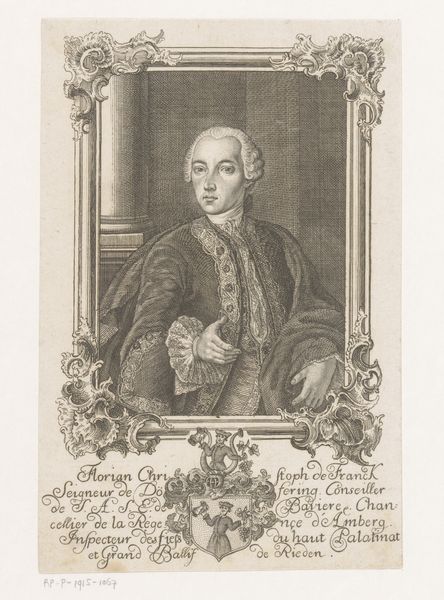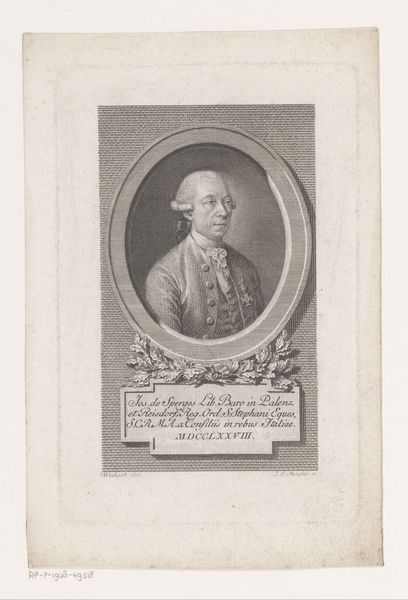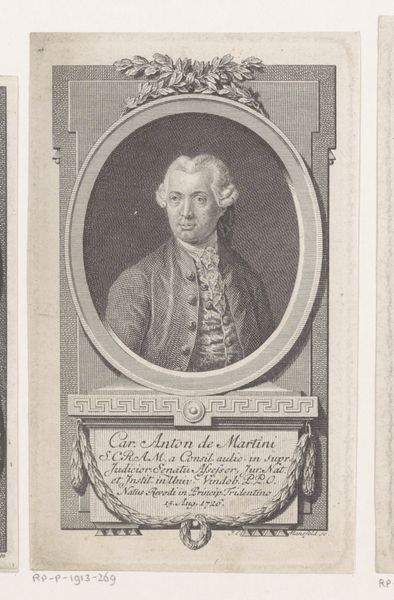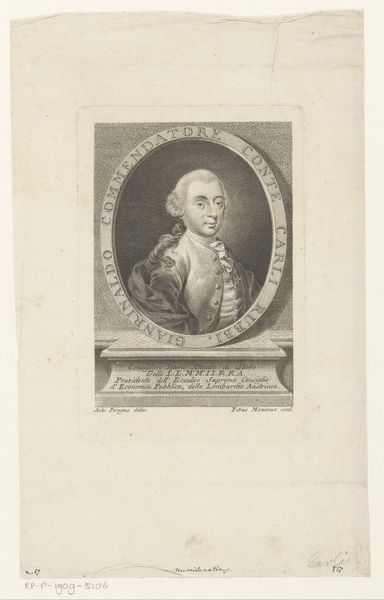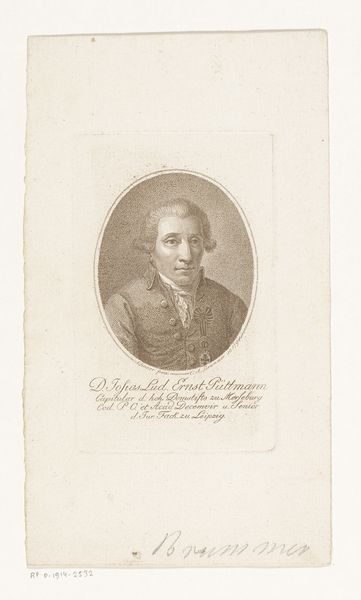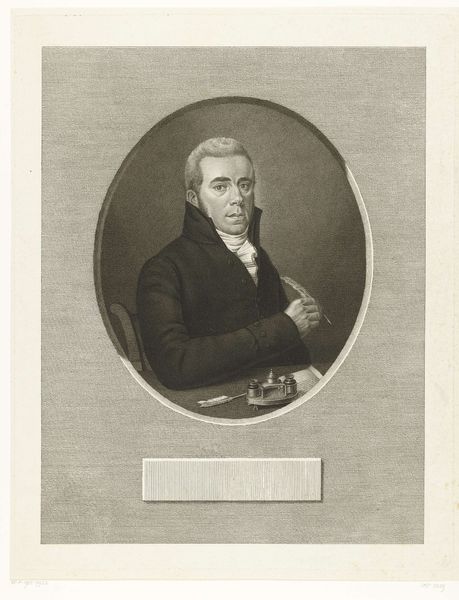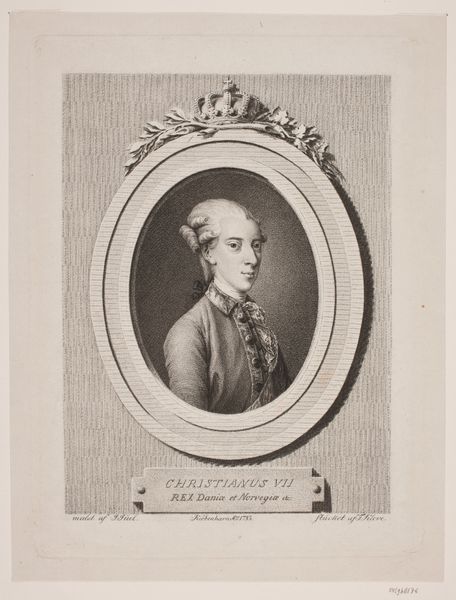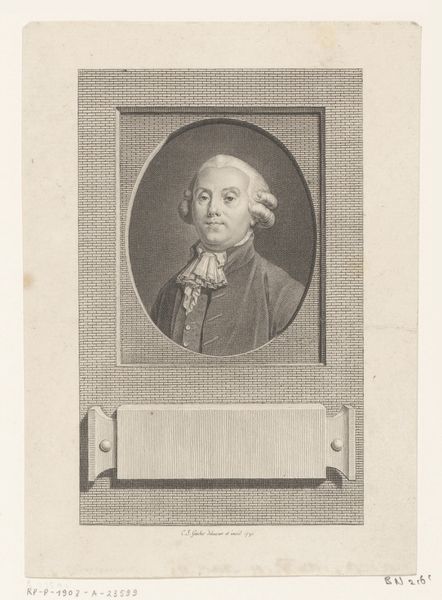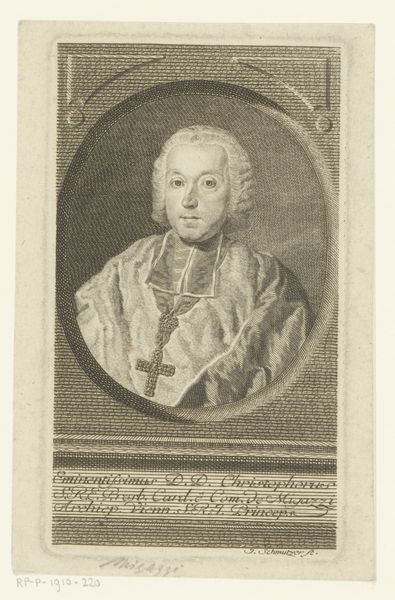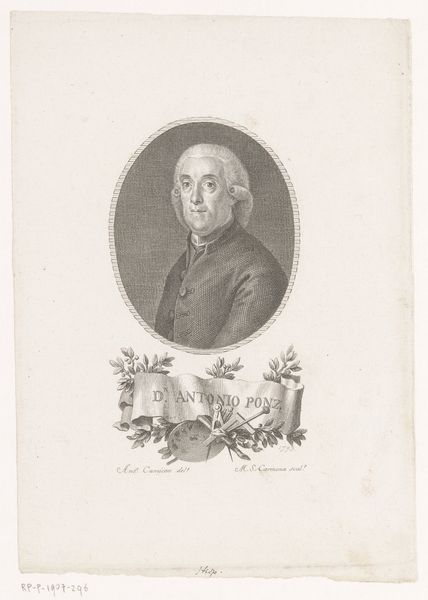
engraving
#
portrait
#
neoclacissism
#
history-painting
#
academic-art
#
engraving
Dimensions: height 227 mm, width 150 mm
Copyright: Rijks Museum: Open Domain
Editor: Here we have André Joseph Mécou’s "Portrait of Peter III, Tsar of Russia," created sometime between 1781 and 1837. It's an engraving. What strikes me most is how the fine lines create a sense of texture in his garments. What can you tell us about it? Curator: This engraving is interesting from a materialist perspective because it reflects the socio-economic conditions that allowed for the rise of print culture. The intricate detail, achieved through a laborious process, speaks to the highly skilled labor involved. What about the means of production and consumption? Editor: I guess that engravings, like this one, were probably more accessible than painted portraits, allowing for wider dissemination of the Tsar's image? Curator: Precisely. Consider also the relationship between art and craft in this era. Was engraving considered "high art" in the same vein as painting? Or was it viewed as a more functional craft, designed for reproduction and dissemination of information? And what does that say about the perceived value of the labour involved? Editor: It's interesting to consider that distinction. Maybe this challenges the traditional art historical focus on singular masterpieces by considering how art was used and circulated within society? Curator: Exactly. The value isn't just aesthetic; it's about how this object functioned within a complex web of social relations, economic factors, and technological capabilities. This isn't just a portrait of a Tsar; it's an artifact of a specific moment in the history of production and consumption. Editor: It definitely provides a broader way of viewing art, moving beyond just admiring the subject or aesthetic qualities. I hadn't considered the labour element of creating it. Curator: I think that the materiality and process behind art, force us to see it as embedded in specific socio-economic circumstances.
Comments
No comments
Be the first to comment and join the conversation on the ultimate creative platform.
